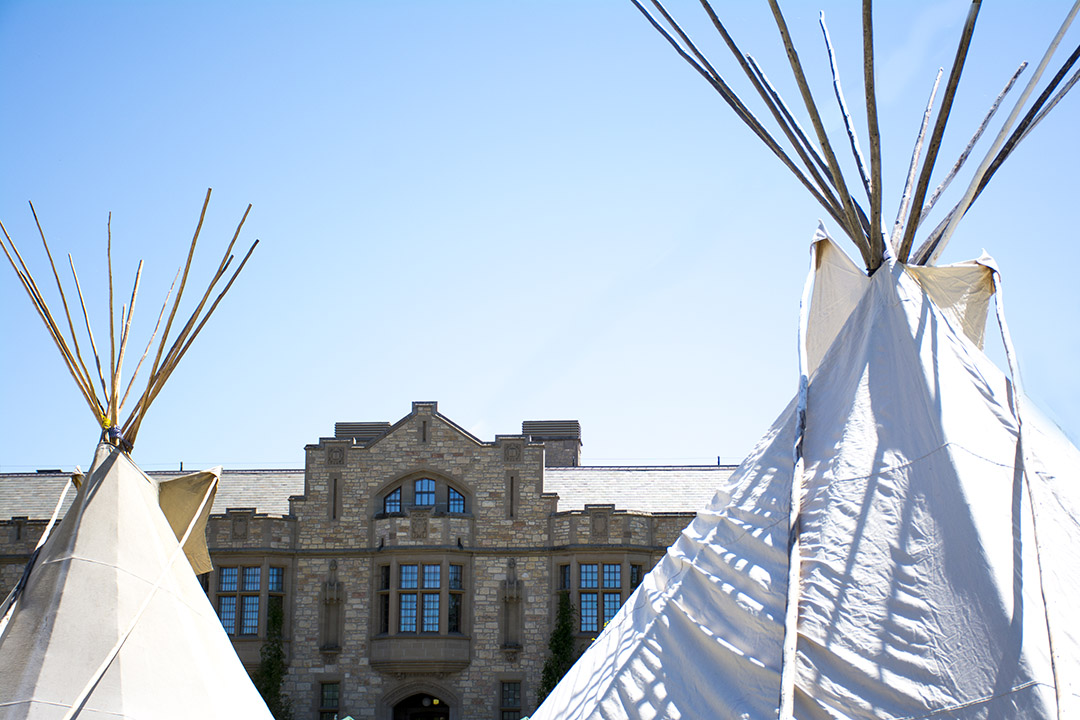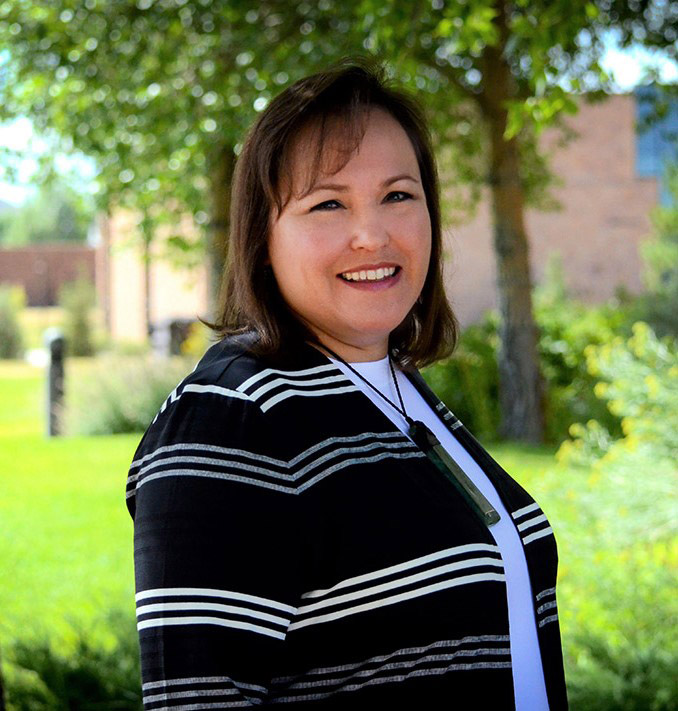
Uplifting Indigenous voices: Fall symposium champions Indigenization at USask
A year after the implementation of the University of Saskatchewan’s (USask) historic Indigenous Strategy, the USask community came together at the ohpahotân | oohpaahotaan Fall Symposium held Oct. 28, 2022, to connect, network, and share successes in implementing initiatives that champion Indigenization.
By BROOKE KLEIBOERThe ohpahotân | oohpaahotaan "Let's Fly Up Together" strategy document was gifted to the USask community on Aug. 20, 2021, by a group of 33 Indigenous Elders, Traditional Knowledge Keepers, and Language Teachers. The gift represents the partnerships between USask and the communities it serves, and is meant to serve as a living strategy that provides an Indigenous-led pathway to reconciliation.
Woven together with the goals built into the University Plan 2025, the Indigenous Strategy document outlines commitments, principles, and calls to action for all institutional bodies, offices, colleges and units to build into their everyday strategy and operations. It also provides distinct markers that serve as guideposts for the university community to measure implementation progress along the way.
The document is also the first Indigenous Strategy that has been solely created by Indigenous people at a Canadian U15 research institution.
"We have been participants and not bystanders in this great cultural opportunity now before us in Canada,” said USask President and Vice-Chancellor Peter Stoicheff. “Students, faculty, staff, researchers, and leaders of the future will benefit from every step we have taken to weave Indigenization and reconciliation into our university.”

The fall symposium served as an opportunity for four colleges, schools, and units to present on the implementation of the Indigenous Strategy in their areas. The office of the Vice-Provost, Indigenous Engagement (OVPIE) provided networking and dialogue opportunities for all members of the university community to make connections and work together in pursuit of Indigenization.
“It has been a long road to get here,” said Dr. Angela Jaime (PhD), interim Vice-Provost, Indigenous Engagement, during the opening remarks at the fall symposium. “We’ve started the journey but today brings us together to start important conversations about how to work together in pursuit of common goals.”
Fourteen months after the official gifting ceremony of ohpahotân | oohpaahotaan, many USask colleges, units, and offices have begun developing initiatives and programming that will help the university community to meet the markers introduced in the Indigenous Strategy document.
To date, the OVPIE team has presented to more than 50 units, offices, and colleges at the university to present an overview of the strategy document and to start conversations about how it can be uniquely implemented across campus.
The seven Guiding Principles outlined in the document are safety, wellness, stewardship, representation, right relations, creation, and renewal. To embed these principles in its daily operations, colleges and units across the university have begun to expand development on a number of initiatives that aim to Indigenize and decolonize programming and supports.
Undergraduate and graduate students, faculty and staff are all integrated into plans to implement the Indigenous Strategy campus-wide. At the inaugural symposium event, representatives from the USask College of Kinesiology, the College of Agriculture and Bioresources, the Edwards School of Business, and the Gwenna Moss Centre for Teaching and Learning outlined how the Indigenous Strategy fits within their work and where they are currently developing initiatives in areas that require further growth.
For example, the College of Kinesiology has implemented the wellness principle within its educational curriculum by creating a required course focused on Indigenous wellness, and elective options with a highlight on traditional Indigenous games. Research resources have also been dedicated to projects focused on the physical, mental, cultural, and social benefits that result from performing traditional Métis social dances.
Representatives from the Gwenna Moss Centre for Teaching and Learning outlined how programs such as the Certificate of University Teaching and Learning places a focus on creating culturally competent faculty and graduate students in the areas of communication and a deep understanding of worldviews and their influence on power and position in an institution such as a university.
Although only a small number of initiatives are highlighted here, the USask campus as a broad community is dedicated to continuing to uplift Indigenous voices and contribute to a culture of reconciliation and healing. The second phase of strategy implementation has started with the OVPIE team continuing to offer support and opportunities for conversation as campus initiatives move further into development, measurement, and reporting stages.
The fall symposium was the first half of the networking and dialogue initiative, with plans for a follow-up event in spring 2023, when more colleges and units will present their progress on implementing the Indigenous Strategy in their day-to-day work. These events are open to the entire campus community to attend and participate in. More details will be available in spring 2023.

